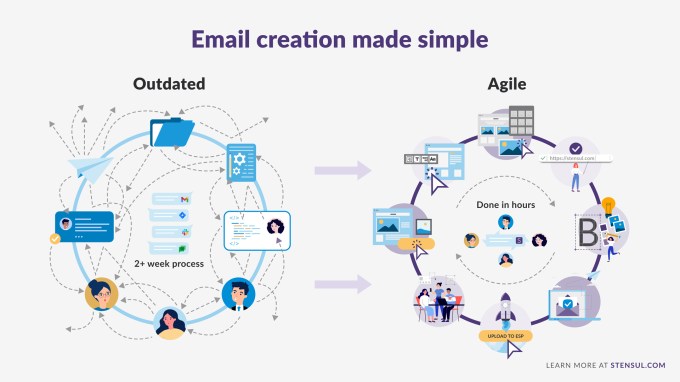Penguin Business describes Starling Bank founder Anne Boden’s “Banking On It” as the “first-hand account of one woman’s quest to rebuild Britain’s broken banking system.” Written with the help of a ghost writer, Boden relates how she came up with the idea to found a challenger bank and the many obstacles she faced along the way.
Fewer than 300 pages, the book parachutes the reader immediately into a cab journey in Ireland that Boden is taking post-financial crisis, when bankers weren’t exactly close to the public’s heart. Everything had changed. Yet, concludes the future Starling founder, the big banks had learned nothing and were determined to continue with business as usual. Thus, the scene is set for why a woman in her fifties would be ambitious enough to start a bank of her own.
I wouldn’t characterize Boden’s story as a page-turner in its entirety, but from then on in there’s more than enough narrative drive to get any fintech aficionado to where they want to go, including an account of Boden’s split with former Starling CTO Tom Blomfield, who left with other early members of the management and engineering team to found rival challenger bank Monzo.
As someone who has had the pleasure of speaking to and spending time with a number of people on both sides who were there when the alleged “coup” took place, this section made for uncomfortable reading. And, of course, it’s worth remembering that Boden’s book shares just one side — her side — of the story, which she has every right to own. However, we are yet to get Blomfield’s version of events directly (and may never), while others who were there have already reportedly disputed Boden’s account following the publication of an abbreviated extract in the Sunday Times two weekends ago.
Although the book presented very few surprises for a journalist who has spent the last five years obsessively covering Europe’s fintech industry, there were still one or two “a ha” moments, not least that Boden’s first contact with Harald McPike, the wealthy hedge fund manager who would go on to back Starling, came via a cold inbound message from a member of McPike’s team.
The Starling founder nearly ignored the message completely, but what followed was an offer not just to invest in Starling’s seed round but to do a mega-round released in tranches. This meant that Boden, who had struggled to raise traditional venture capital from VCs in London and beyond, could focus on recruiting a new team and building out the infrastructure required to launch an actual bank.
She paid a high price, giving away a majority stake in the process. As one former Starling employee told me, having diverted from the VC playbook, lower-ranking staff at the challenger bank would sometimes scratch their heads as the money taps kept running without the numerous fundraising rounds typically required. Now we know how.
This is not my memoir, right. You know, people at the end of their career write memoirs. I’m at the beginning.
There is also the £1 million in debt that Boden racked up employing management consultant firms to help her with the bank license application process. The issue of that debt, and who should take responsibility for it, would add further complications and conflict during the founding team’s split amid Starling’s fundraising woes.
What we don’t always get is a tremendous amount of introspection, with Boden telling me that “Banking On It” is not a memoir but a business book, even thought it often reads like one. “This is not my memoir, right. You know, people at the end of their career write memoirs. I’m at the beginning,” she says, in an exclusive interview with TechCrunch.
Boden said she isn’t going to retire any time soon and that Starling isn’t planning to sell to a big bank. Instead, her sights are set on an IPO. “I’ve had a long career, which is full of interesting things. And the next challenge is in front of me,” she says, with Starling aiming to be profitable by Christmas or early next year.
During our conversation, Boden dispelled one media myth (which my own sources confirm): There was never any kind of gagging order or confidentiality agreement prohibiting parties from talking about the Starling-Monzo split. Instead, by both camps, the media were sold a line designed to avoid a “he said, she said” scenario, creating the clear space needed for each bank to develop its own narrative. If everyone involved was free to talk after all, it seems that Boden has grabbed first-mover advantage.
It’s often said that history is written by the victors, but in the Starling-Monzo split story, it’s still not clear which bank will be victorious, while a less emotional assessment points to both upstarts having already won. For the real enemy was never “Anne” nor “Tom,” but an incumbent banking industry that had grown not just too big to fail but too big to listen and respond to a generation of digital-savvy customers who wanted a more modern banking experience. And it’s within this context that, regardless of who chooses next to disclose their account of events, the real Starling-Monzo story is still being written.
Below is a transcript of Boden’s interview with TechCrunch, lightly edited for length and clarity.
TechCrunch: Why publish a memoir, and why now?
Anne Boden: As you know, I’ve already done another book, “The Money Revolution.” I like words and I like being able to write things down and convey ideas. So I suppose I always knew that I would write a book. And I spend a lot of time and get inspiration from listening to audiobooks from other entrepreneurs, reading entrepreneurial books, anything about other people’s experiences, I take that information to try to help me on this journey.
Therefore, I came to the conclusion that I also had something to give. And I really wanted to do my best to put down and describe the journey of being an entrepreneur, the journey of a startup, and it’s not easy. I think that I come across lots of people asking me for advice, so I wanted to do that, I wanted to put it all down into a book about entrepreneurship. And of course, there’s no point in having a book about entrepreneurship, that’s sort of academic, you have to put a lot of your own experience into it.
Why now? Well, you know, Starling is going to be profitable by Christmas. And last year, and the year before, I just didn’t have enough bandwidth to do it. I thought the time was right, where I had enough to say about sharing my experiences.
I think the first thing is, never give up. And I think the lesson is that you’ll have ups and downs in any particular venture, and you have to recover, you have to be resilient.
Somebody asked me, “does this mean Anne is planning to retire?”
This is really putting down on paper where we are at the moment. It’s been written over several years, and I’m hoping to use this to inspire a generation of entrepreneurs. But also quite excited about the next phase of Starling, of fintech, of tech. I’m still excited by technology, I still get the real buzz about what it can do. I’ve been very, very fortunate to work in some interesting places, and do some interesting things, [and] I think the world could really, really change in the next 10 years, and I think that fintech could really be part of it. So I’m excited about the future. And to you maybe interviewing me in five years’ time about the next book, and in 10 years’ time about the next book after that. This is all about really passing on the knowledge to date.
So you’re not planning to sell or to try and sell Starling anytime soon?
No, no. Look, I didn’t do all this to sell out to a big bank. And I’ve got my sights on an IPO. I’d very much like to do that. I’ve been very, very fortunate, I’ve had a long career, which is full of interesting things. And the next challenge is in front of me. And no, this is setting my sights on the next challenge. And there’s lots going on.
At times during the book — aside from perhaps the chapter dedicated to the alleged “coup” — it’s not entirely clear what you want the reader to take away from the book. If you could pick your top three takeaways, be that business lessons or things people might not know about you or your thought process, what would they be?
I think the first thing is, never give up. And I think the lesson is that you’ll have ups and downs in any particular venture, and you have to recover, you have to be resilient. And every single entrepreneur gets a near death experience, and you have to come back from it. It’s all about recovery and resilience and using that for the next phase.
I think the second thing is that you can’t do it on your own, you have to do it with lots of different types of people and different sources of knowledge. I read a lot, whether they are Paul Graham essays or Stanford podcasts. I reached out to lots of different people through this process that helped me along the way, and I think that you have to figure out where those resources are and bring them all together.
And I think the third thing is, you’ve got to change. People talk about the project and the product iterating and pivoting, but you have to add your own personality and your own learnings have to do that as well. Because as an entrepreneur, as a leader, you are part of the product, you have to think, you have to absorb things and you have to evolve. I was mid-fifties when I decided that I was no longer working for a big bank, but I was going to be an entrepreneur with a startup. And that was a huge transition. But we all can do transitions, and we can do transitions throughout our life. And I hope that people take away that from the book.
It’s interesting you say that. I guess one of the aspects in the book that I felt was slightly missing was, I didn’t get a sense of what that transition was for you personally, whether that be in your management style, your understanding of the difference between corporate life and startup life etc. Was that on purpose; you didn’t want to do too much personal development and [instead] stick with the business side of the story?
I think that this is a business book. You know, I was quite surprised that people started calling it a memoir. And it’s doing really well in the memoir section of Amazon at the moment, so I’m quite flattered. But this isn’t a memoir. This is much more of a practical book about, you want to be an entrepreneur, you want to do a startup, you want to build something that’s never been done before. And the ‘me’ part of it all is to illustrate what happens. This is not my memoir, right. You know, people at the end of their career write memoirs. I’m at the beginning.
I think the pivotal moment in the non-memoir memoir is when Harald McPike said I’m not going to do a seed round, I’m going to do three tranches, so like a mega round, based on very specific and well-aligned milestones tied to the banking license application process.
From my understanding, that allowed you to have some breathing space to get to the stage of a licensed bank. Instead, it could have been, especially when you lost the team, that if you’d got a seed round but then had to almost immediately focus again on trying to raise another round, that may have also been the death of Starling. Do you think I’m over-egging the significance of that funding round coming in tranches and being committed up front?
It is very, very unusual. But it was [also] quite unusual for a startup to have so much documentation, to have so much that had been thought through. I’d been working on Starling for two years, I had a lot of information, lots of research, and I really, really understood the business I was going to build, and I hadn’t raised money. So the first money in was Harald McPike’s money, and I was two years into it all. I had an application for a banking license in three boxes, basically stacked up because they only take boxes and physical paper.
Therefore, I could really define what would be in the three stages, I could really define what you’d get for 3 million, what you’d get for 15 million, what you get for 30. So then I just had to hit those milestones. And hitting those milestones is really, really tough. But I had a lot of experience in running really big projects that are costing hundreds of millions, so I knew very well I could hit those deadlines; I could deal with having to hit the deadline by a certain date and releasing the money. So it was a big advantage that I didn’t have to go back out and fundraise. That was an advantage. But it was also an advantage and a disadvantage that I was two years in. If I advise anybody in a startup, it’s raise money early on and try something. It’s much easier to do that than wait two years whilst you have everything ready, and then raise a big round.







